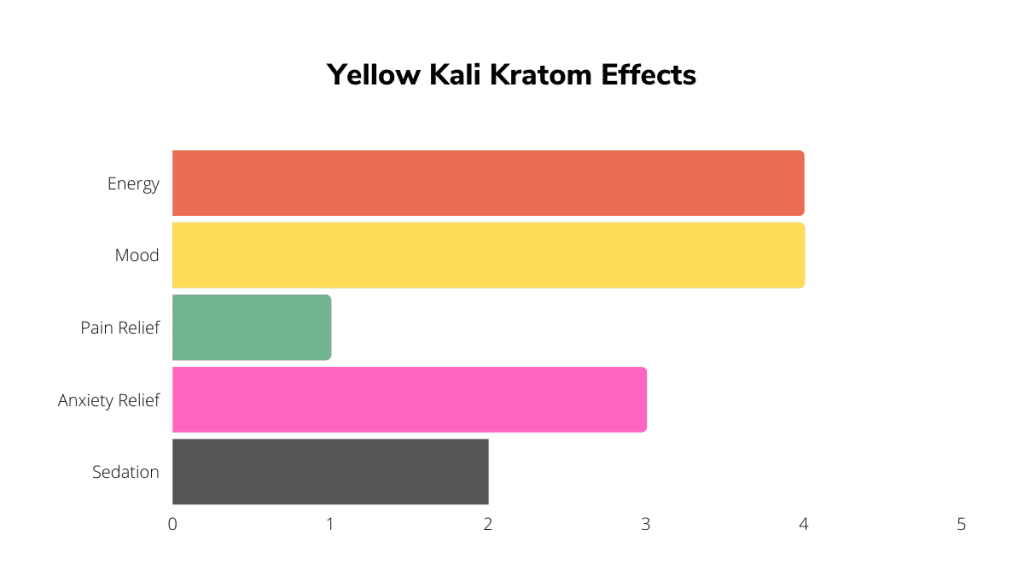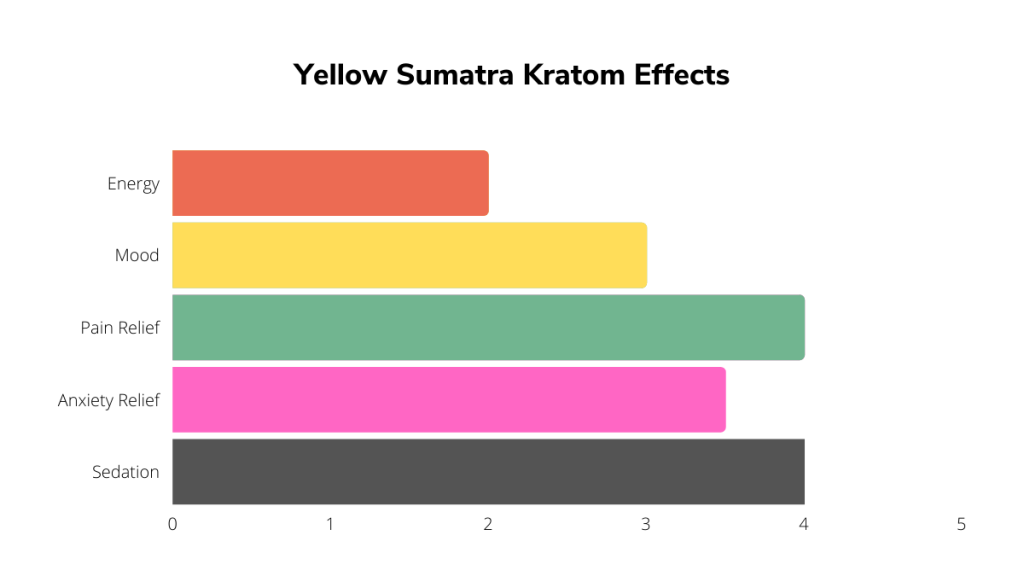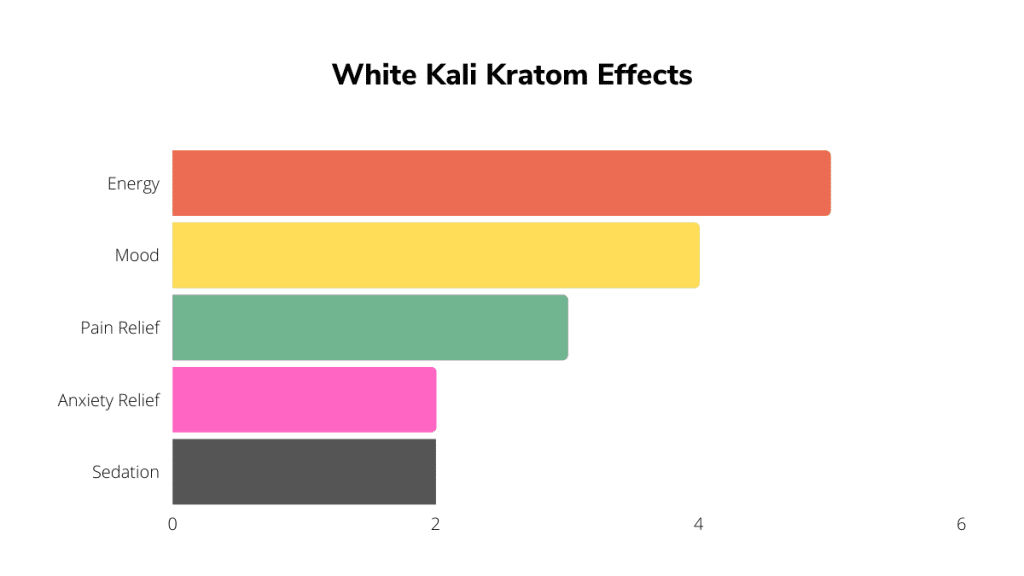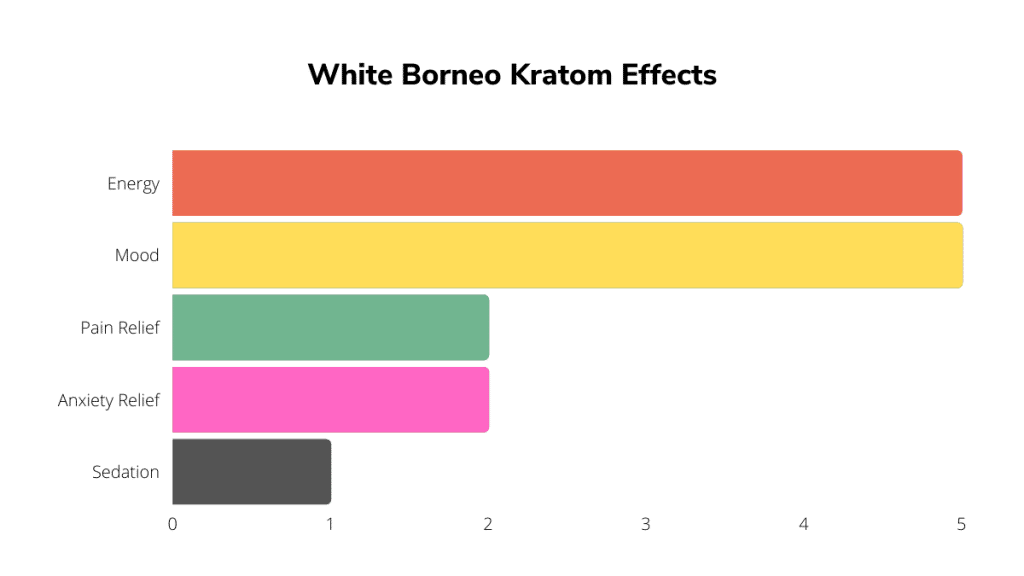What Is Yellow Kali Kratom?
Kratom (Mitragyna speciosa) is an herb from Southeast Asia that has been used for hundreds of years in traditional medicine. It’s a member of the coffee family and has an array of effects that make it useful for addressing chronic pain, anxiety, insomnia, and depression.
As kratom plants age, their alkaloid content changes, altering its effects. Kratom farmers take great pains to harvest their plants at the right time to create a specific set of effects.
There are three main strains of kratom determined by when the leaves are harvested. White-vein kratom comes from harvesting young plants, green-vein kratom comes from harvesting slightly more mature ones, and red-vein kratom from picking leaves from fully-grown specimens.
Yellow Kali is a form of white-vein kratom that comes from sun-drying White Kali kratom leaves.
White Kali kratom is a stimulating strain that provides a substantial energy boost, often used for enhancing productivity and motivation. Yellow Kali has similar but milder effects due to how sun drying the leaves changes their chemical makeup.
Also see: All About Kali Kratom Strains.
What Does Yellow Kali Kratom Do?
Yellow Kali kratom gets most of its effects from mitragynine, an alkaloid that makes users feel awake and alert. Yellow strains often have slightly lower mitragynine concentrations than the corresponding white strain, making them less intense.
Most people who take Yellow Kali kratom say it is a smoother experience than taking white-vein kratom, with less jitteriness and a calmer brand of energy. This makes it better for anxiety-prone people and those who find white Kali too stimulating.
Yellow Kali’s 7-hydroxymitragynine content is quite low, meaning it doesn’t offer much in the way of pain relief or sedation.
Yellow Kali Specs & Rating

- Energy: ⭐⭐⭐⭐ — Yellow Kali is a great strain for an energy boost. It’s comparable to 1-2 strong cups of coffee without the jitters.
- Mood: ⭐⭐⭐⭐ — Many people prefer Yellow Kali over white strains for improving their mood since it’s less likely to cause anxiety.
- Pain Relief: ⭐ — Yellow Kali is not the best strain for pain relief. It may help soften minor aches and pains but won’t do much for more severe pain.
- Anxiety Relief: ⭐⭐⭐ — Yellow Kali can help some people manage their anxiety but can also make it worse in especially anxious people. For those who it helps, it does a decent job.
- Sedation: ⭐⭐ — Yellow Kali is not a very sedating strain, although its mood enhancement capabilities can help some people feel more relaxed and calmer.
1. Energy Booster
Yellow Kali is most often used for energy boosts and enhancing productivity. Many people take Yellow Kali in the morning in lieu of their morning coffee, saying it offers cleaner energy and doesn’t lead to the harsh crash they experience from caffeine.
Related: Best Kratom Strains For Energy & Focus.
2. Improved Mood
Many people prefer white strains for improving their mood, but Yellow Kali can also help users feel better and more motivated to take on the day. Most people find Yellow Kali provides a subtler, less manic mood boost than White Kali, making it an excellent choice for calm, focused motivation.
Related: Best Kratom For Mood & Euphoria.
3. Anxiety-Relief
Yellow Kali is not the best strain for anxious people because it has different effects on everyone.
Some people find that it helps them feel more relaxed and less anxious, while others say it actually makes their anxiety worse. Anxiety-prone individuals should tread lightly, starting slowly with small doses and seeing how they react.
Related: Best Kratom For Anxiety & Stress.
Yellow Kali Kratom Dose
Kratom’s effects are dose-dependent, with lower doses offering more energy and higher doses providing more relaxation. For a stimulating strain like Yellow Kali, the effects will be mostly stimulating across all dose sizes, with only small changes noticeable at very high doses.
Related: Kratom Dosage Calculator: How Much Kratom Should I Take?
Dose for Mild Stimulation
Taking 1–2 grams of Yellow Kali is enough to make most people feel a small energy boost. Low doses are also good for people with anxiety who are concerned that larger doses may trigger them.
Dose for Substantial Stimulation
Most people prefer taking 2–5 grams of Yellow Kali, saying it strikes the perfect balance between energy and mood improvement to make them motivated and productive. Some users also claim that moderate doses enhance their cognitive function, aid their focus, and improve their memory.
Dose for Smooth Energy
Even though Yellow Kali is milder than its white counterpart, some people still find low doses too stimulating. Taking larger amounts in the 6–8 gram range can help give those people clean, smooth energy without as much risk of overstimulation. Paradoxically, some people find high doses trigger their anxiety, making it difficult to experiment with higher doses if you have anxiety.
Side Effects of Yellow Kali
The main side effects of Yellow Kali are dizziness, loss of mental clarity, memory impairment, anxiety, jitters, and nausea.
Since Yellow Kali is a stimulating strain, users need to be especially attentive to signs of overstimulation. Jitters, uneasiness, and restlessness are signs that you may need to lower your dose or switch to a milder strain.
All kratom strains have the potential to become addictive over long periods of time. Although kratom is not an opioid, it interacts with opioid receptors in the body, meaning it can create a physiological dependence similar to painkillers like morphine and codeine.
Managing your use frequency is vital for avoiding addiction with prolonged kratom use. Experts suggest taking kratom no more than five days per week and taking prolonged breaks from kratom every one to two months.
Lethargy is a sign of systemic fatigue and an indication that your body needs time to recover.

Similar Kratom Strains
Yellow kratom is typically harder to find than white kratom, and that is especially true of Yellow Kali kratom.
If you have trouble finding Yellow Kali or discover that it’s a bit too pricey for your budget, here are some strains that have similar effects profiles.
1. Yellow Sumatra Kratom
Yellow Sumatra kratom is an excellent alternative to Yellow Kali but suffers from the same issues of low availability and high price. It gives users the same smooth energy and cognitive boosts of Yellow Kali, with a bit more euphoria.
The extra mood improvement from Yellow Sumatra makes it a better choice for stress management, although some users find the extra euphoria makes it harder to concentrate.

2. White Kali Kratom
The easiest way to get a similar strain to Yellow Kali is to try some White Kali kratom. Even though White Kali is a less-refined, harsher experience, the overall effects are similar. Still, it is much easier to find in stock and is usually significantly cheaper.

3. White Borneo Kratom
White Borneo kratom is less stimulating than most white-vein kratom, making it a great option for mimicking the smooth, controlled energy you get from Yellow Kali. It provides mild euphoria and subtle cognitive enhancements, enough to benefit from without it becoming distracting. White Borneo is also one of the longest-lasting white strains.

Final Thoughts: Should I Try Yellow Kali Kratom?
Yellow Kali kratom is a rare strain of sun-dried White Kali that many users prefer for its smoother energy and less intense euphoria. Yellow Kali has a slightly different alkaloid profile than White Kali, which removes the harsh edges from the effects and leaves you with a subtler, more refined experience.
Unfortunately, Yellow Kali is less well-known than White Kali and fills a small niche in the kratom market, making it harder to find and more expensive. Still, it’s worth the extra effort and cash if you can get your hands on some since it removes many of the most troubling side effects of White Kali.
If you want to get a sense of what Yellow Kali has to offer but can’t seem to find any in stock, Yellow Sumatra, White Kali, and White Borneo are all viable alternatives that provide a reasonably similar experience.

